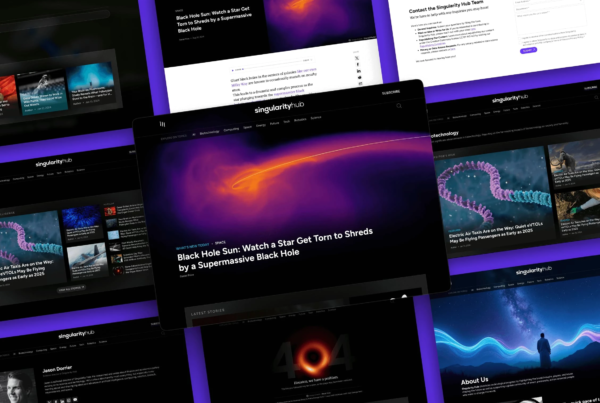The AdMonsters Publisher Forum is one of the signature events in digital media publishing, every year. We’ve also found it to be one of the best run events by any event standard. Shout out to their team.
Having just come back from the conference with some time to reflect, let’s walk through three key takeaways for website publishers, based on attending the conference and getting to interact with the attendees.
High level: content-wise the AdMonsters publisher forum is focused on digital advertising and advertising operations. Some of the most prominent publishing brands are very well represented, so be in the mind set of of RPMs, CPMs, RPSs, and the rest from some of the industry’s sharpest minds. We found that conference and attendee interest focuses on ads competency — there was less discourse than we expected around other monetization strategies (e.g., a company’s approach to affiliate) and/or how it grows earnings by expanding audience via revamped CMS, SEO, syndication, and other tactics born out of 3rd-party cookies going away).
#1 topic on everyone’s mind: what happens when cookies go away?
The most pressing topic on everyone’s mind in the publisher ad supply chain — from advertisers through demand-side platforms (DSPs), supply-side platforms (SSPs, and ad tech providers: 3rd-party cookies are going away (this means that cookies can only be set by the site being visited, not other websites).
The forthcoming reality — expected as soon as late 2024 – means publishers (and their partners) have to develop strategies and capabilities to provide advertisers with the necessary data for audience targeting. Improving targeting and ad relevance is one of the best ways to earn more competitive rates for selling your ad inventory.
Forbes was the leading keynote at the conference, and they presented in-depth about “Forbes 1.” This is their internal capability to collect and aggregate first-party data to supplement audience data, which helps them earn more when selling their ad inventory. NBC Universal also has done something similar. But where does that leave mid-sized publishers, who most likely do not have access to the same resources and capital to build a CRM of similar functionality and scale?
Google has launched its Privacy Sandbox, which they describe as an “initiative [that] aims to create technologies that both protect people’s privacy online and give companies and developers tools to build thriving digital businesses.”
My take — Privacy Sandbox will allow the collection of user data using first-party cookies that are compatible with Google Ads, but ultimately is this just a consolidation play by Google? Ad platforms that require third-party data will be the most impacted, as more ad dollars are likely to shift from these platforms to Google. Many publishers who utilize these third-party services will be indirectly impacted.
#2: How supply side providers stay relevant
One of our favorite panels featured a publisher, ad provider, and a demand-side buyer. High drama and comedy all around.
The point that hit the hardest: when the publisher pointed out that SSPs, based on revenue share arrangements, do not really have incentive to improve offerings to publishers.
Some providers say they are rolling out different types of SaaS solutions in response (e.g., impression-based pricing) but it was unclear to me based on the presenter’s experience how they’re matching adoption and target decision maker. The publisher said that he really liked the concept of impression-based pricing because it aligns incentives, but there was a very interesting/provocative/fair question that questioned whether any of it mattered due to the Amazon-Google-Facebook (ahem) “cartel” (lol).
But the overall question of the session is a relevant one: SSPs value is aggregating sources of demand for publishers. As more competition enters the Ad:tech-verse, and as demand sources create more pathways to access data, SSPs that don’t evolve can be squeezed out.
Said differently, SSPs are at risk of becoming commoditized and cut out of the value chain unless they evolve. 2024 will be a very interesting, and most certainly disruptive, year in advertising technology.
#3: The importance of User Experience (UX) to buyers
In another Keynote from the Goodman Group (media buying agency), their CEO stressed the importance of UX, even going as far to saying that he and his constituents always evaluate UI/UX prior to considering buying inventory.
Furthermore, and as always, security matters. The Goodman Group CEO had lots of energy in his discussion on fraud/MFAs. The main point: authentic, compelling content will always be rewarded.
The overarching theme — balancing UX and revenue objectives re: advertising (often incongruent) — is an age old challenges for publishers, and someone will always have to pay the bills (we published one perspective on how to assess this balance earlier this year). The most important takeaway: don’t sacrifice UX for short-term revenue gains in advertising. The short-term gains can have long-term, negative ramifications that just don’t add up.
Also, from what we can tell the key in advertising right now is the types of products offered to the advertisers. The visual experience has to satisfy increasingly picky online browsers, while the data provided via the backend has to tie back to clear ROAS (or other standard return on investment metric).
—
Across everyone we met, we were fascinated by the in-depth insight into publishing and how to fuel growth in 2024. Special shout out to a few folks:
We were really impressed by how you’re approaching growth in 2024, and it was terrific to hang out. For those looking to learn more about the content of the 2023 Ad Monsters NOLA Publisher Forum, please see our Publisher Forum event page.
—




